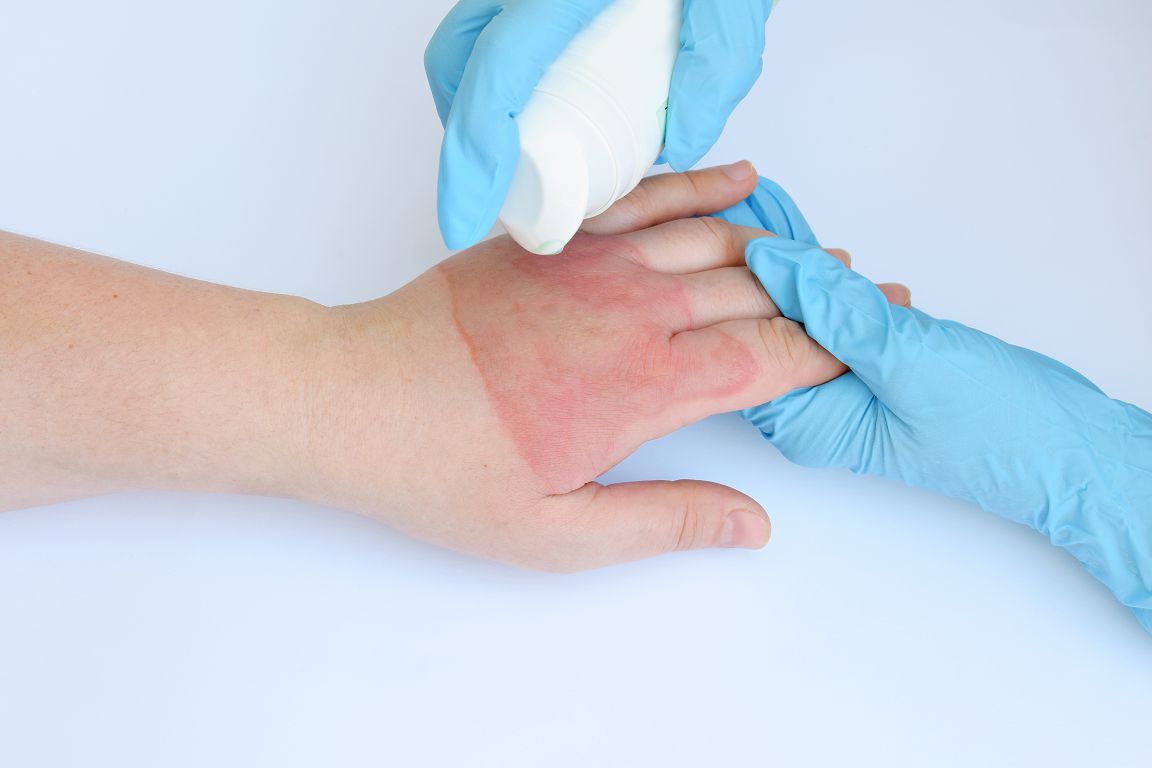After the essential first aid steps (rinse, remove, cool, cover, and transport), further management is based on the condition of the burn wound. The following are the treatment methods for different stages:
Early Debridement
Surgery to do debridement surgery, and non-surgical methods are the use of water therapy to first burn the wound on the dead skin, hair and contaminants removed, in order to keep the wound clean and clean.
Covering Treatment
Use dressing with medicine for wound covering and fixation.
Eschar Management
Burns above 2 degree will produce a leather-liked necrotizing tissue: eschar. Complications occur once eschar cover the wound for a period of time. Further management, depending on the clinical requirement, includes excision, incision, and eschar dissection.
- Excision: Perform an incision on the eschar to facilitate its detachment.
- Incision: Remove the eschar based on the wound condition.
- Eschar dissection: Gently remove the eschar using specialized tools to keep the wound clean.
Skin Graft
After eschar management, burns above 2 degree shall be covered as soon as possible to prevent bacterial infection, body fluid with electrolyte loss, bleeding, and suffering of burn victims.
So called skin graft is to take healthy skin from other region, usually thoughs or scalp, except burn wound. The wound after skin graft will keep immobilization for 1 to 2 weeks for re-vasculation between skin graft and underneath wound.
Skin Substitute
- Bio-dressings: made from different kinds of animals. (eg: pocine.)
- Synthetic dermal analogs: include bilayer or, more commonly used, multilayer material.
For victims of burns below 2 degree, use skin analogs, this will gradually shed away after dermal regeneration, to cover the wounds for 1-2 weeks.
For victims of burns above 2 degree, skin analogs provide temporary barrier of dermal tissue and granulation growth till skin graft performed.


